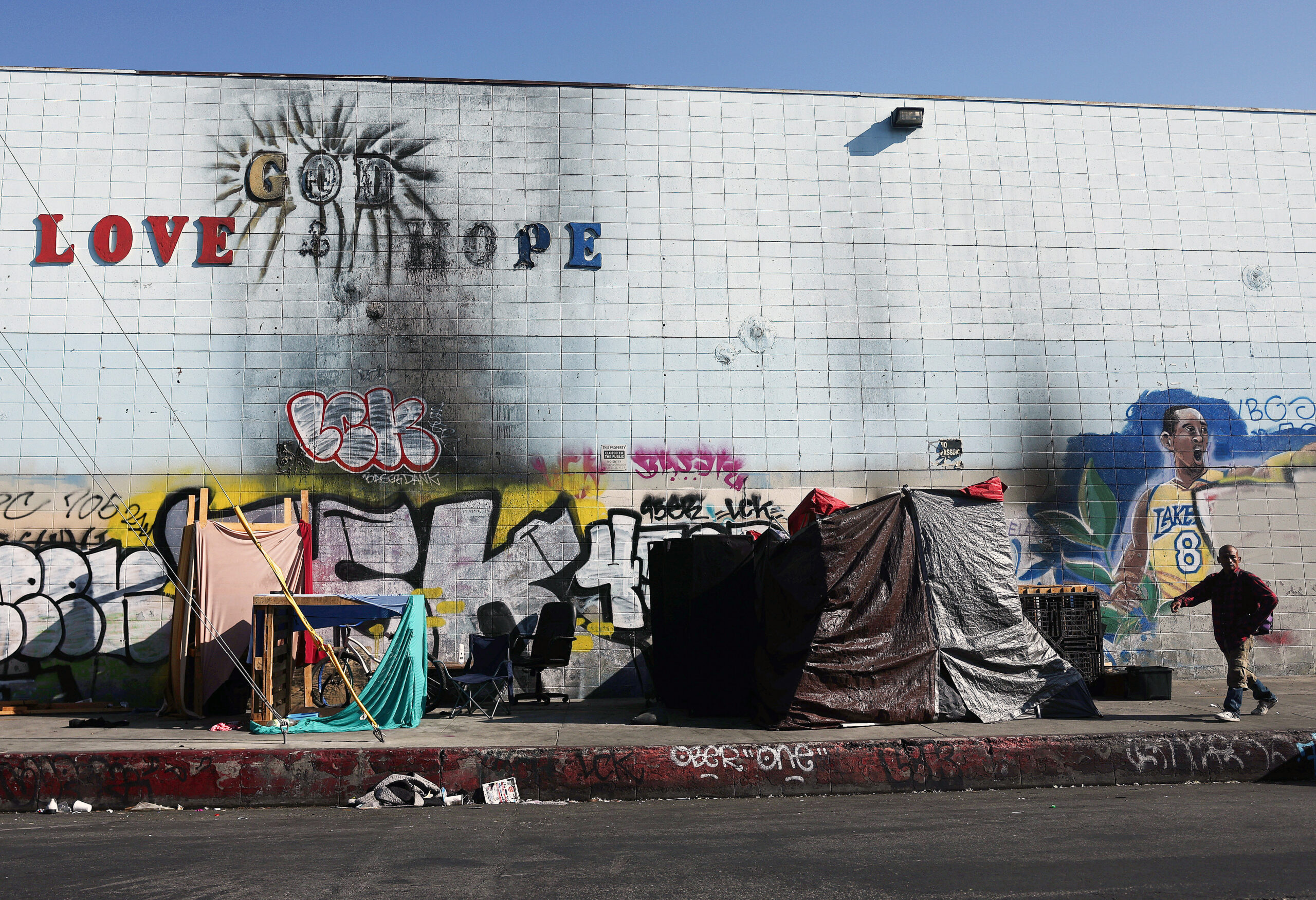

The number of unhoused veterans grew to 35,574 in January 2023, up 7.4% from the same point-in-time count in 2022. That’s according to new data released by the departments of Housing and Urban Development and Veterans Affairs.
After several years of a downward trend, the number of veterans living in shelters or on the street grew due to a combination of a lack of affordable housing and the end of several supportive measures, including eviction bans. The annual point-in-time-count, conducted every January, gives a sense of how many people are experiencing homelessness at the start of each year. Last year there were 33,136 unhoused veterans reported.
The 7% increase in veterans experiencing homelessness is a smaller spike than the overall rise in homelessness, which shot up 12% to approximately 653,000.
The figures were released on Friday, Dec. 15. The VA announced a series of new grants to try to help unhoused vets and veterans on the verge of homelessness. Those include $26 million in grants for groups providing legal aid to veterans as well as hundreds of millions for rapid rehousing programs to help those who fall into homelessness quickly find a home.
“One veteran experiencing homelessness will always be one too many — and we will do everything in our power to ensure that veterans get the safe, stable housing that they deserve,” VA Secretary Denis McDonough in a statement. “These new grants are a critical part of that effort, empowering VA and our partners to provide more housing and wraparound services to more homeless and at-risk veterans than ever before. Together, we will not rest until veteran homelessness is a thing of the past.”
Subscribe to Task & Purpose Today. Get the latest military news and culture in your inbox daily.
Although that number marks an increase over the 2022 count, it’s still 4.5% below where the 37,252 reported from the January 2020 count. It’s also significantly lower than the number in 2010.
No one factor is behind all cases of homelessness, but HUD and the VA pointed to several contributing issues. They include a shortage of affordable housing, rising rents and an increase in evictions as restrictions from the COVID-19 pandemic ended. Princeton University’s Eviction Lab, which tracks developments in that field, reports a large increase in 2022.
The January 2023 count offers a look at the situation, but only just one moment. It does not reflect developments that have happened over the last several months. Outside of an overall rise in evictions, May 2023 saw the end of several COVID-19 pandemic-related protections for active-duty and veteran households tied to housing. The now-expired programs included direct payments to help people stay housing, including rental assistance or per diem help.
It’s unclear how many veterans are experiencing chronic homelessness (a period of homelessness lasting more than a year, per the federal definition) or are quickly finding a new home, either on their own or with family or friends. As with the wider population, more people fall into short-term homelessness and are able to find some form of housing, rather than chronic homelessness. However, that does not apply to everyone struggling with housing. At the end of November, the VA announced that it had placed 38,000 veterans into housing, but that is not the overall net amount.
The next point-in-time homelessness count will be conducted in January 2024.
The latest on Task & Purpose
- First female active-duty soldier graduates from sniper school
- 5 question only a veteran would ask Medal of Honor recipient Michael Thornton
- Navy fires recruiting district commanding officer
- Army tanker vet facing cancer gets a final wish: send one last round
- Army employee indicted for stealing $100 million from military youth program